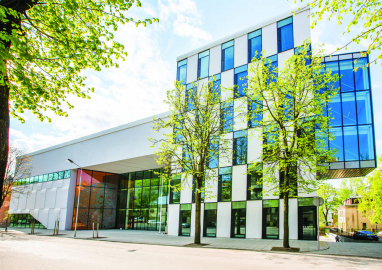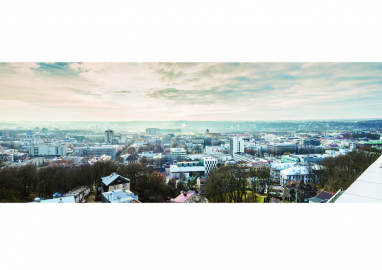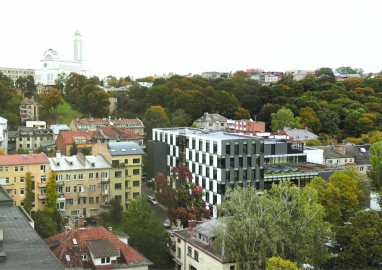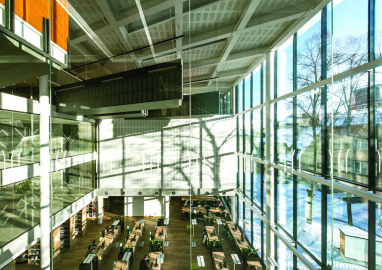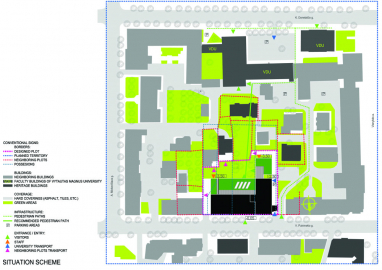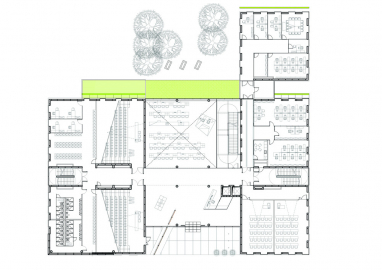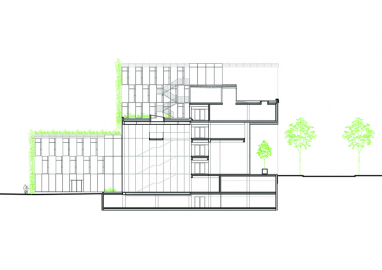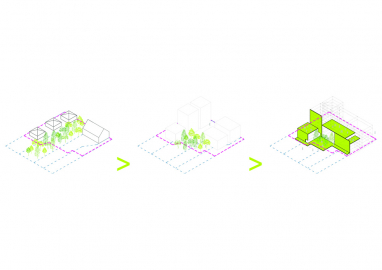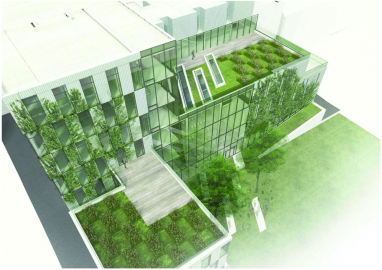Multi-functional Study and Science center of Vytautas Magnus University
Study and Science center of Vytautas Magnus University is a public academic building of special importance for central part of Kaunas New Town. A special achievement can be called its integration within a network of other university and museum buildings. All together they regenerate historical center and enhance the authentic character.
Project is implemented following an architectural competition project titled “Thinking green”. It is a philosophical prerogative – create contextual “green architecture”, based on the historical development of Kaunas city. Mostly between 1920 and 1940, when Lithuanian modernism flourished in Kaunas, green hills of “Žaliakalnis“ neighbourhood, cosy squares and villa gardens were set up to coexist with interwar period architecture. Kaunas has been seeking the nomination of UNESCO World Heritage Site thus all the buildings – old and new – need “to talk to each other”. There are two main aspects in the design. First is the goal to have an academic building with clear identity, which ties up its terraces, vegetation elevations and gardens of “green architecture” with urban green plateau (see panoramic view). Second comes the recognizable features of Lithuanian modernistic architecture – rational volume division following the historical possessions, rhythm of details and contrast of black and white color palette.
In terms of scale the context is multilayered. In the built-up level the context is occupied by residential houses and larger scale buildings. The site of new building was not clearly distinguished, therefore it was an important move to stop passers-by with a stalls piazza. A grand orange stained glass structure with an historical stamp is positioned like a half open door, white plaster street elevation vibrates with rhythm of terrazzo elements.
A valuable stretch of greenery in the southern side of the plot is positioned as structural connection with other University buildings in the same urban block. For these reasons the main building volume with recessed entrance piazza is aligned with the street, while in the back façade volumes recess and fluctuate. Roof and terrace surfaces get covered with grass and blossoming local greenery, climbing plants. Internal yard becomes a shared neighborhoods place, where trees and resting zones are preserved.
Main goal of conceptual scheme is a creation of main public space – the building – between street front and preserved greenery in the back. Transparent walls open up views to the environment that varies with the seasons.
G. Janulytė-Bernotienė studio practices monolithic concrete structure projects. Steel structure elements are introduced to create large spans and possibilities of height. Exposed material surfaces give an image of stability and sustainability combined. Hard materials like concrete and steel are softened spatially with transparent and colourful glass.
Sustainable design principles were employed early from the competition design phase: green plants on facades and terraces, rain collection. Terraces with vegetation absorb and contain rain water thus reducing the load on the city‘s water drainage infratructure. “Thinking green“ is not limited to plants and greenery. The building maximises energy efficiency by employing automatic ventilation system and energy saving lighting control.

